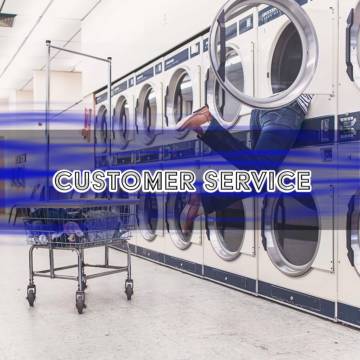In [part 3 of our Inflection Point series,](/blog/the-coming-inflection-point-part-3-what-joe-consumer-wants/) we took a bottom-up perspective to examine the desires of Joe Consumer, and the implications for the on hold and in store industry. This perspective was based on the latest in-depth digital research conducted by world leaders such as Microsoft. In this part 4 post, we expand on this bottom-up research by reviewing the challenges and pain points for businesses and retailers.
Within the industry, service providers and in store music suppliers focus on different product-related tactics, depending on their knowledge and expertise. These tactics or marketing “channels” are typically siloed, and include:
- On-Hold
- Overhead
- Digital Signage
- Web Site
- Social Media
Some service providers may offer only one product across one channel while others will offer multiple products across multiple channels. The real question is not how many tactics or products are offered, but rather what is the customer experience across every touch point or channel?
From the perspective of consumers and businesses, there are several on-hold and in-store business gaps that are driving industry changes. The customer research in this area is clear: consumers, business and retailers want a consistent customer experience, regardless of the tactic or product. That means the music experience and brand message should be consistent across all tactics or customer channels, and the messages should be contextually relevant and personalized as much as possible.
Consumers interact with businesses in numerous ways: visiting their storefront, or place of business, chat with employees, call them on the phone, surf their website, and learn about them via their preferred social media sites.
The business or retailer will spend a substantial amount of money to engage the consumer by using various types of promotional messages – however the reality is that most often the consumer ends up hearing a multitude of un-coordinated messages, “shouted” at the same time. These attempts to engage often end up just being annoying.
If you visit a mall you’ll see many example of such un-coordinated and annoying messages, for example: off-putting music thumping at maximum volume, uncoordinated display screens, printed flyers, coupons, email promotions, text blasts to mobile phone, social media messages, and phones blasting on-hold platitudes (e.g. “Your call is important to us, thanks for holding”). The result: instead of engaging with consumers, consumers perceive this as “noise”. This “noise” can often cause consumers to remove themselves from business lists, hang-up, or walk out of a store.
Instead, there is a need to use the knowledge of the customer’s originating interest to provide continuity of experience. Let’s use the example of a consumer who visits the Lowe’s (furniture store) web site looking for a product like shower heads.
When a consumer clicks on one of the searches below, the consumer won’t be taken to a “generic” web page and delivered the same message that everyone gets. Instead, the consumer will be taken to a page that provides messaging directly relevant to the consumer’s particular interest – whether that be shower heads, kitchen faucets etc.

So if a consumer performed this type of specific web search and they then called into the store, or visited the store, why should they receive the same generic on-hold or walk-in greeting that everyone receives? Why should the specific need that they have already demonstrated to that retailer be ignored when they leave that web channel?
Instead, what if a specific message on shower heads (and special shower head offers) is delivered to their mobile phone when they are in proximity of a Lowe’s store, or if they receive a specific on hold message to help them make an informed purchase decision?
Continuity-of-experience says that when a person walks through the door of the store, the In-Store experience should ideally adapt to that person’s needs, as known from data gathered across the various marketing channels. Likewise in an On-Hold situation, if you have customers calling in about certain offers, or holding for certain departments, the On-Hold experience should adapt to provide the same continuity of experience.
These types of personalized and consistent channel offers are already being done today, to a lesser degree.
- Example 1 - On Hold: Certain VoIP (eg Cisco) deployments with G711 streaming allow for delivering multiple MOH message streams. For example, for a car dealership, customers on hold for the service department could already be provided with different messaging than customers on hold for new vehicle sales, or for pre-owned sales. It’s just a matter of delivering the right caller into the correct queue and playing the right MOH messages on that queue.
- Example 2 - Retail: Using statistical analysis, retailers like Target can examine purchase patterns and predict certain interests (e.g. when someone is pregnant), and then customize mail-out flyers to specific addresses.


One of the surprising results of A/B testing in the other marketing channels (e.g. web, flyers) is that there is often no way to know just how customers will react to your marketing copy: in fact everything you think you might know about copywriting, could well be wrong. The only real way to know is to test different variations and measure their impact on your metrics (e.g. conversions) – and this is what A/B testing provides.
Imagine, as a service provider, you had the ability to tell your customer (the retailer) that you can demonstrate you’ve moved the needle for them by 30% on account of certain adjustments you’ve made to the messaging or the music. This is the power of A/B testing.
Conversely, the industry’s current lack of analytics, and lack of ability to react to consumer data, puts it at a significant disadvantage to other channels (such as web) where analytics, A/B testing and so forth are well-established practices.
The bottom-line is that businesses and retailers expect service providers to prove the ROI on their investment.
They expect and need the following Stats & Analytics:
- How many people are on hold?
- What messages did they hear?
- Did this trigger behaviors? (Eg hang-up, inquiry, sale?)
- Who’s in store?
- Where are they in store?
- What are they reacting to?
- What is dwell time?
- Do they return? Is there a pattern of visiting other branches?
- How do they react to personalization of the experience
Two examples illustrate this need:
Example 1 - In-Store: If a grocery store manager needs to move his bbq’ed chickens, imagine if he could action that from an iPad he’s carrying around – by having a pre-built campaign he can turn on In-Store just for when he needs it.
Example 2 - In-Store, or On-Hold: If a client is running a few messages like “ask us about our #1 offer, our #2 offer, our #3 offer”, then which offer actually gets the most asks (is it #1, #2, or #3)? Why shouldn’t a store manager be able to play with this himself by switching in and out different variations (all pre-built) to get the best results?
In other words, Self-Service is not about taking things away from the service provider - but giving the business or retail client a greater feeling of control, immediacy and involvement. This is not a threat, but an opportunity.

Key Take-aways:
- Look for opportunities to get metrics/ analytics, but expect this to be hard.
- In the mean time, as the next best thing, look for opportunities to give your client a greater sense of control by facilitating a “self-serve” component where they can interact with your service delivery and choose between alternatives.
73% of retailers are investing in technology to know a customer’s location in their store.
42% of retail executives expect to send directed offers based on a customers’ location in a store in the next 5 years.
70% of shoppers now use a mobile device while shopping in a store.
Nearly 50% searched in-store using their smart phone, and 25% performed comparison shopping on their phone while assessing a purchase.
Brick-and-mortar stores are under pressure from such “showrooming:” eg BestBuy has attributed store closures directly to this.
20% of consumers said they changed their mind about a purchase after being influenced by in-store media.

So look for technologies that interface well with mobile, and technology partners with expertise and proven results in this area. This concludes post #4 of our Inflection Point series. Watch for our next post in about a week’s time. In the meantime we’d love to hear from you. Send us your comments and inputs.




